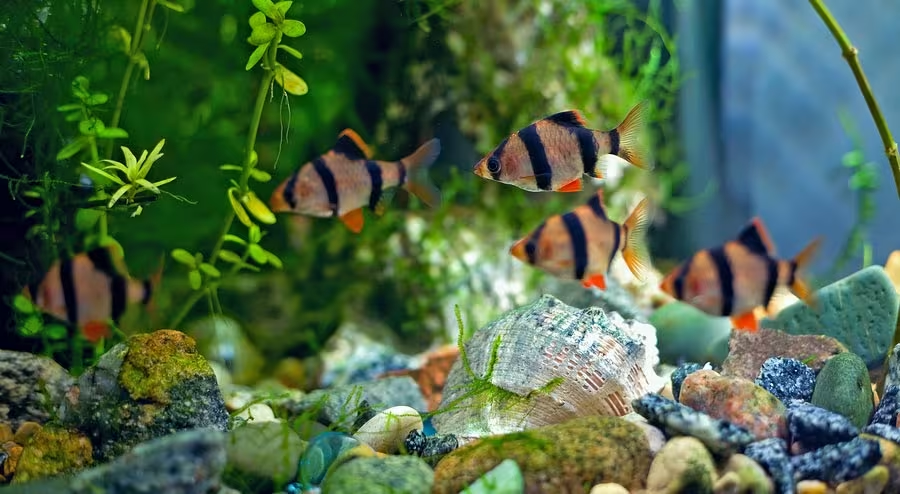

Golden Tiger Barbs are quick, social, and a bit nippy when bored. The wrong mix turns a relaxing display into nonstop chasing. The right mix shows off their schooling behavior while everyone else goes about their business.
| Rule | What it means in practice |
|---|---|
| Match energy levels | Pair them with fish that swim mid-water and won’t get stressed by a bustling group. |
| Avoid long fins | Flowing tails invite nipping. Skip fancy guppies, bettas, and angelfish. |
| Keep groups together | Most community fish feel safer in six-plus numbers. A crowd spreads attention and cuts bullying. |
| Check water overlap | Golden Tigers like 74-80 °F, pH 6.5-7.5. Pick species that thrive in that bracket. |
| Species (common name) | Why it works | Group size | Extra notes |
|---|---|---|---|
| Zebra Danio | Same speed and attitude | 6–10 | Their stripes create a nice visual echo without clashing colors. |
| Cherry Barb | Peaceful, stays lower in the tank | 8–10 | Males get deeper red in planted tanks, adding contrast. |
| Corydoras Catfish | Bottom-dweller, ignores barbs | 6+ | Choose robust species like Bronze or Panda. |
| Bristlenose Pleco | Algae control, armored body | 1 | Needs a hiding cave and some driftwood to rasp. |
| Harlequin Rasbora | Calm but fast enough to dodge | 8–12 | School stays tight, making the tank look fuller without chaos. |
| Species | Common issue | Safer alternative |
|---|---|---|
| Dwarf gourami | Gets its fins nipped | Thick-bodied, short-fin dwarf cichlids like Bolivian Rams |
| Neon tetra | Too shy; hides constantly | Ember tetra or black neon tetra |
| Fancy guppy | Long tails are targets | Endler’s livebearer (shorter tails, faster) |
| Angelfish | Slow and tall, becomes stressed | Smaller rainbowfish such as Forktail |
Week 1: Add the full Tiger Barb school. Observe for a week.
Week 3: Introduce mid-level companions (danios, rasboras).
Week 5: Add bottom crew (Corydoras) or a single pleco.
Week 7: Final touch—shrimp or snails if algae remains in check.
Each pause lets the bio-filter catch up and gives you time to spot hidden health problems.
| Sign you’re fine | Sign you need to rethink |
|---|---|
| Fish share the whole tank and feed together. | One species hugs corners or hides behind filter. |
| Minor chasing stops within seconds and no fins tear. | Repeated nips, split fins, or missing scales after 48 hours. |
| Everyone colors up, eats, and shows natural patterns. | Stress stripes, clamped fins, or gasping at surface. |
Remove bullies or victims promptly. A simple tank divider can buy time while you find a new home for a mismatch.
Golden Tiger Barbs do best with active, short-finned fish that match their water needs and pace. Plan the lineup first, add stock in stages, and watch body language during the first week. Your reward is a lively, balanced display where every species shows its best colors.
Next, Article 4 will cover aquascaping ideas that spotlight schooling behavior and make maintenance easier.
Restock alerts, care tips, and the occasional coupon one email a month, unsubscribe anytime.